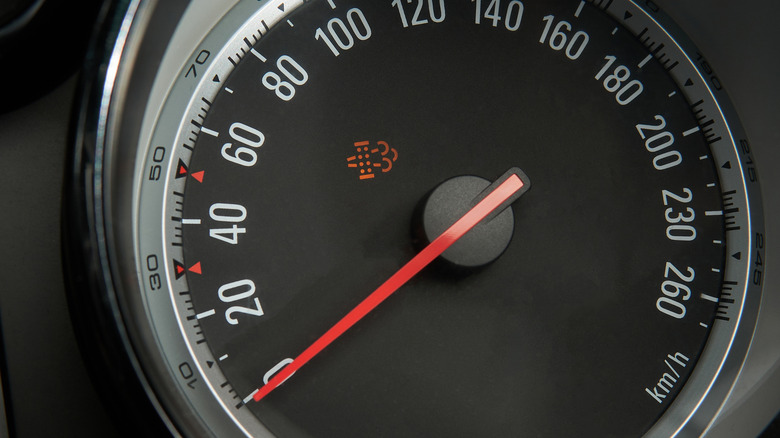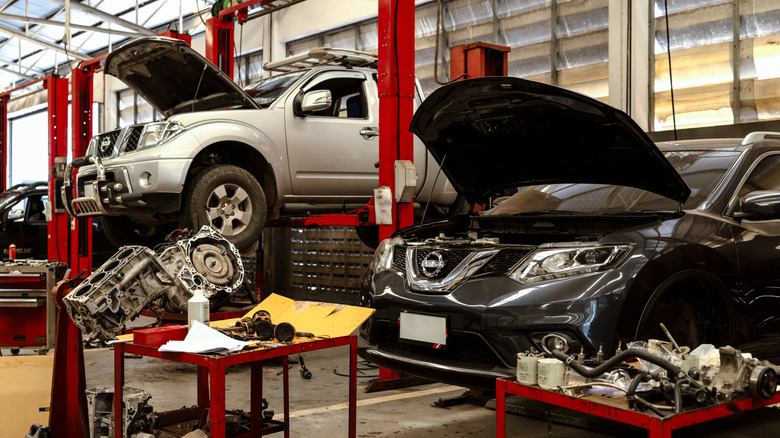Here's What You Should Try First If Your DPF Light Comes On
Nobody likes seeing a light pop up on the dash. Even if it's not a particularly troubling light, like low fuel or low tire pressure, but there is nothing worse than something a little more concerning jumping up on your gauge cluster when driving. Of all the lights a diesel car owner doesn't want to see, though, the DPF light is up there as one of the least welcome.
The DPF light doesn't indicate a specific fault, but rather that there is an issue within the system somewhere, and that further investigation is required to clarify exactly what's up. See, the DPF — which stands for diesel particulate filter – works by filtering out soot and harmful particles before they exit the exhaust and enter the atmosphere. Essentially, the DPF itself traps them, and when the exhaust gets hot enough, they will burn off and the trapped soot will turn into ash. This is a process called regeneration, and it's vital to the ongoing health of your DPF.
That annoying light on your dash might mean this isn't happening though, and that your DPF is too clogged up for regeneration to happen in this manner. To find out what to do first, you could always refer to your vehicle's handbook, but generally, ensure you're not running low on fuel, and then drive the vehicle at slightly higher revs.
Volkswagen, for example, recommends between 1,800 and 2,500 rpm for a minimum of 15 minutes. If you drive an automatic, select Sport mode, as this will enable you to hold onto the revs for longer. This style of driving will encourage regeneration to happen, but it doesn't always work.
What to do next if your DPF doesn't regenerate on a drive
Driving at higher revs might get you back on the road without a light shining up at you, but if it doesn't, then it's best not to continue driving. The next best thing would be to contact roadside assistance, even if the car does seemingly drive fine still. While it may drive okay, continued driving with the DPF in this state could cause lasting damage to the exhaust or engine, resulting in higher bills when you do eventually get to the workshop.
Once recovered or limped to a workshop, the first thing a mechanic will likely try is a forced regeneration. This will heat your DPF to extreme levels in order to burn off that excess soot, although it's worth noting that this doesn't always work, especially if a forced regeneration has been used in the past. If it doesn't, cleaning the DPF is another option.
A cleaning agent is introduced to clear the blockage, and this can be quite effective for even severe blockages. Using mild cleaners can also be great as a preventative measure, especially for those who drive diesel cars on mostly short trips, as it's in these instances that the filter will typically clog up quickest.
While it can work, in some cases, the DPF will be too far gone, and replacement will be the only option. This is the worst case scenario, as regardless of what you drive, replacing the DPF is rarely a cheap endeavor. Total costs tend to fall between $1,000 and $2,500. Prestigious brands can see this figure quickly soar though, so taking action to stop the DPF from clogging in the first place is certainly wise.

